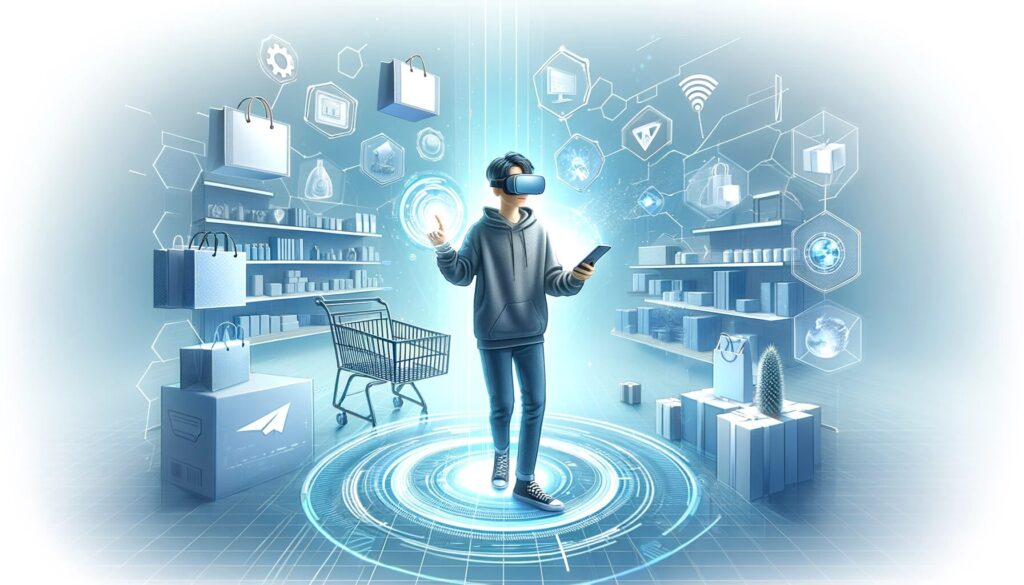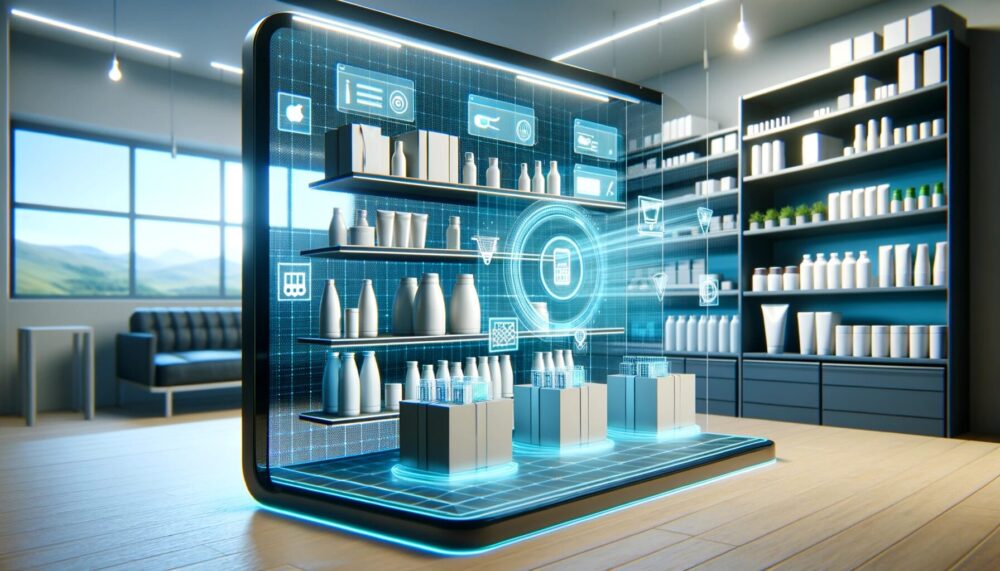Think back to the world before smartphones. The year is 2006 – physical limitations bound daily tasks, and the availability of information is tethered to desktops and libraries. The notion that a device could fit in your pocket, acting as a gateway to unlimited knowledge and entertainment and as a professional camera, navigator, communicator, powerful gaming device, and personal assistant, was pure science fiction. Yet, in just a few short years, the smartphone revolutionized our daily lives in ways we couldn’t have fully imagined. It redefined convenience, access, and connectivity, turning the once-unthinkable into the utterly commonplace. It is so common that we often feel a sense of dread when we’re without them (that’s a topic for another day).
As we stand on the brink of the Augmented and Virtual Reality (AR/VR) frontiers, we face a similar precipice of change. AR and VR promise a leap forward that may be as profound as the smartphone—altering how we consume media and reshaping our experiences of the world around us. The potential is immense, and while we can predict some changes, the full scope of AR/VR’s impact is likely as unfathomable to us now as the smartphone’s was back in 2006.
Implications for Physical Products
In an era where digital transformation is reshaping every aspect of our lives, the retail and packaging industries are not left untouched. The shift from physical shelves to digital showcases marks a significant turn in how products are presented and perceived. Online sales platforms, exemplified by features like Amazon’s “See it in your room,” increasingly prioritize website imagery and interactive experiences over traditional in-store appeal, fundamentally altering the art of packaging. This evolution is not just about large corporations; small businesses also adopt AR tools, like virtual menus, enhancing customer engagement and competitiveness in the digital marketplace.
This post will delve into the evolving landscape of packaging design in the AR/VR era, examining its implications on creativity, manufacturing processes, and the potential ripple effects across the industry. These technologies are altering how products are displayed and reshaping consumer behaviors and decision-making processes. As we navigate these changes, a critical question emerges: Will the practical advantages of AR/VR in packaging overshadow the need for creative, tangible designs, or can a balance be struck that honors both innovation and artistic expression? This balance will be pivotal in defining the future of packaging in an increasingly digital world.
Harnessing the Power of AR/VR in Transforming Packaging
Integrating AR and VR into retail is poised to mark a groundbreaking evolution, promising a more profound and interactive experience than current online shopping offers. Just as smartphones initially faced skepticism but rapidly became indispensable due to market forces and practical utility, AR/VR technologies are on a similar path in transforming retail experiences. In contrast to today’s static e-commerce, AR/VR enables consumers to engage with products in a fully immersive environment, potentially redefining the role of packaging in the digital age.
The transformative capability of AR/VR to enhance or replace the sensory experience provided by physical packaging is expected to be significant. Smart AR products, akin to the smartphone revolution, could turn basic packaging into canvases for vibrant, interactive experiences overlaying digital information directly onto the consumer’s vision. This shift, driven by substantial cost-saving opportunities, is set to be a significant influence in retail, where economic efficiency often dictates innovation adoption. Similarly, VR introduces unprecedented potential in product packaging, enabling designs that transcend physical world limitations, unlocking imaginative possibilities that are currently inconceivable, and offering a new dimension to packaging creativity and consumer interaction.
These anticipated changes promise significant advantages in terms of packaging efficiency and sustainability. As the digital experience becomes the primary method of attracting and engaging customers, physical aspects of packaging are likely to be streamlined, focusing more on practicality and environmental considerations.
However, this era of digital packaging also presents challenges. The potential decline of creative physical packaging raises questions about the future of brand identity and customer connection in a predominantly digital marketplace. Just as smartphones eventually won over skeptics through their undeniable utility and integration into daily life, AR/VR technologies in packaging will overcome the initial resistance to change, proving their value in enhancing consumer experiences and brand engagement.

Consequences for Packaging Lines
The rise of AR/VR in retail sets the stage for a fundamental shift towards more uniform packaging standards across the entire packaging line spectrum. This push for standardization is a response to the growing digital marketplace and a strategic move towards optimizing efficiency and functionality throughout the packaging process.
Streamlining of Equipment
The movement towards homogeneity in packaging sizes and shapes allows the entire packaging line to be reconfigured for greater efficiency. Streamlining becomes feasible as the need for complex machinery setups and changeovers diminishes. As a result, packaging lines will experience reduced downtime, decreased maintenance demands, and a smoother workflow, as they can be redesigned to handle a more consistent product profile. This standardization will impact the entire packaging operation, encompassing everything from filling and sealing processes to conveyors and accumulators and extending to labeling and palletizing. Each step in the line can be fine-tuned to the predictable dimensions and properties of standardized packages, enhancing the precision of the machinery and the integrity of the end product.
Economic Advantages in Packaging Production
A standardized approach to packaging can also unlock economic benefits throughout the production cycle. Simplified machinery, reduced material diversity, and the potential for bulk procurement of uniform packaging components can contribute to notable cost reductions. This economic efficiency will not be limited to capital and operational expenditures but also leaner inventory management and storage requirements.
Adaptation and Modernization Challenges
However, this evolution towards a standardized packaging line requires a significant adaptation period. Existing systems may need substantial overhauls or replacements to align with the new standards. This modernization phase entails capital investment and potential temporary disruptions. The challenge lies in managing this transition effectively, balancing immediate costs against long-term gains in efficiency and scalability.
Implications for Garvey
As we peer into the transformative potential of AR/VR in retail, it’s crucial to assess the direct implications for Garvey’s conveyor and accumulation solutions. The industry’s shift towards more standardized packaging aligns with Garvey’s longstanding commitment to innovation and efficiency in our equipment designs.
Proactive Standardization Efforts
The shift towards standardization in the market is a tide that Garvey is well-positioned to ride. We have been at the forefront of standardizing equipment designs, as evidenced by our Bi-Flo and Infinity Accumulators. These systems exemplify our approach to creating versatile, adaptable, and efficient solutions that can handle a variety of packaging demands without the need for extensive customization. Our designs’ inherent flexibility and scalability mean that as packaging becomes more uniform, our systems can integrate seamlessly into these evolving production lines. Our emphasis on modular designs not only meets the current demands for efficiency but also sets the stage for easy integration with the digitally enhanced packaging lines of the future. As AR/VR technologies pave the way for more uniform packaging shapes and sizes, Garvey’s equipment stands ready to deliver the reliability and performance our clients expect.




